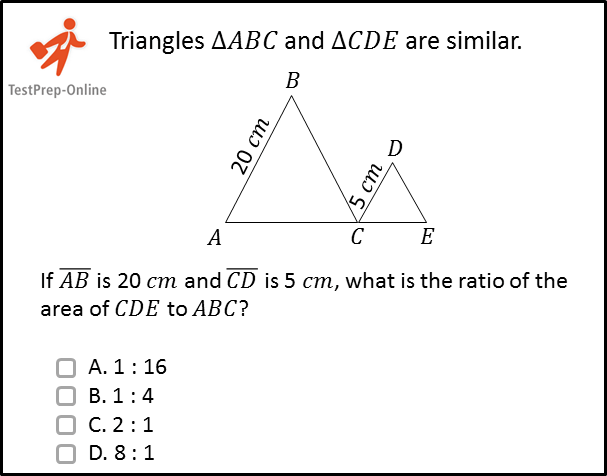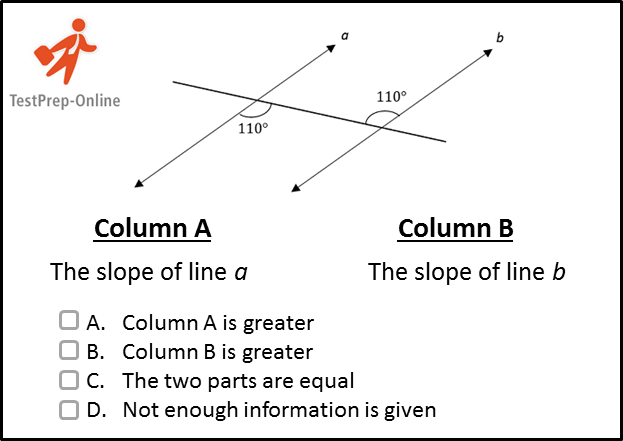The ISEE Quantitative Reasoning section is designed to evaluate a student's mathematical reasoning abilities and problem-solving skills. This section focuses on assessing how well a student can think mathematically, rather than merely testing their knowledge of specific mathematical concepts. In the following sections, we will break down the types of questions found in the ISEE Quantitative Reasoning section and provide examples to illustrate the skills assessed in this part of the exam.
Free ISEE Quantitative Questions
About ISEE Quantitative Reasoning
The Quantitative Reasoning section features two types of questions on the ISEE Test: Word Problems and Quantitative Comparison Questions. All questions are grade-specific, tailored to the appropriate level of difficulty for each grade.
At the Middle and Upper Levels, there are 37 questions in the Quantitative Reasoning section. Here's a breakdown of what to expect:
Word Problems: You can expect 18-21 of these questions that describe a scenario and ask you to solve a problem using the given information
Quantitative Comparisons: There will be 14-17 questions where you need to compare the values or quantities in Column A and Column B and choose the relationship between them.
It's important to note that out of the 37 total questions, only 32 are actual scored items that count towards your Quantitative Reasoning score. The remaining 5 questions are unscored and are being tested for potential future use on ISEE tests.
What is Quantitative Reasoning on the ISEE?
The questions in the ISEE Quantitative Reasoning section are based on standards set by the National Council of Teachers of Mathematics (NCTM). Specifically, the questions cover the following areas of mathematics.
- Numbers and Operations
- Algebra
- Geometry
- Measurement
- Data Analysis & Probability
- Problem Solving
You may or may not need to do calculations. The main idea is to show your cognitive abilities. The emphasis is on your problem-solving abilities using math as a tool. Be ready to combine information, find what's important, and use the right math reasoning.
Word Problems
In the Quantitative Reasoning section, the student is presented with a word problem, followed by four possible answer choices from which they must select the correct solution. Below is an example of a word problem from an Upper Level ISEE test:
Word Problems Sample Question

Quantitative Comparison Questions
The Quantitative Comparison Questions, found only on the middle and upper levels, present two quantities for comparison. There are two columns, Column A and Column B, displaying the quantities to be compared. The answer choices among the Quantitative Comparison Questions are always the same four options:
- The quantity in Column A is greater.
- The quantity in Column B is greater.
- The two quantities are equal.
- The relationship cannot be determined from the information given.
Below, you can see an example of a Quantitative Comparison question from an Upper Level ISEE test:
Quantitative Comparison Sample Question

ISEE Tips - Quantitative Reasoning
The Quantitative Reasoning section may have some questions that seem easier for you and others that seem more difficult. A good strategy is to first answer the questions that you feel confident about, and then return to the more challenging ones. If you're still unsure about a question after reattempting it, use the remaining time to make your best guess, as points are not deducted for incorrect answers.
ISEE Word Problem Tips
Here are some tips for tackling ISEE Quantitative word problems:
- Tip 1: Always read the whole question carefully to understand exactly what it's asking you to do.
- Tip 2: Highlight or underline the important parts of the question that are needed to solve it. If there's any information that doesn't seem important, you can cross it out to avoid confusion.
- Tip 3: If struggling, try to simplify the problem or break it into smaller steps.
- Tip 4: A smart guess (or estimation) might be enough to pick the right answer, especially if you can rule out the obviously wrong choices. Look at the answer options to see if your estimate is one of them.
ISEE Quantitative Comparison Tips
Here are some easy-to-follow tips for tackling the Quantitative Comparison section on the ISEE:
- Tip 1: Read both quantities fully and carefully to understand what is being compared.
- Tip 2: Look for key words like "greater than", "less than", or "equal to" that indicate the relationship being asked about.
- Tip 3: Try to simplify any algebraic expressions or arithmetic operations before comparing.
Always verify if you have sufficient information to compare the quantities given. If there appears to be inadequate information to make a decisive comparison, choose option D: "The relationship cannot be determined from the information given."
ISEE Quantitative Reasoning Prep
Help your child excel in the ISEE Quantitative Reasoning section with TestPrep-Online! Our comprehensive ISEE Practice Test packs cover ISEE Quantitative Reasoning, word problems, and quantitative comparisons. These packs include realistic practice tests and valuable tips to familiarize your child with the test structure. For optimal preparation, we recommend purchasing either the Middle Level or Upper Level test, depending on your child's grade.



